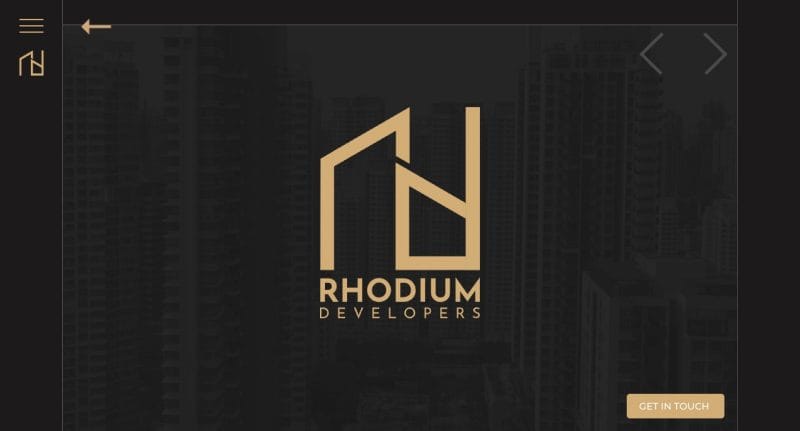To get a job as a web developer, it is essential to have a well-made portfolio. A portfolio is a collection of your work that demonstrates your skills and abilities. There are many ways to make a portfolio, but it is important to make sure that it is professional. You must showcase your skills, abilities, and personality through your portfolio to stand out from the competition. But what exactly should you include in your portfolio? In this article, we'll give you some tips on how to make a portfolio for web developer that will help you land the job you want.
What To Include In Your Web Developer Portfolio?

When you're applying for jobs as a web developer, employers will want to see your portfolio. Your portfolio is a collection of your work that shows off your skills and abilities. Here's what you should include in your web developer portfolio.
Bio
Your bio should give potential employers a snapshot of who you are, what you do, and what makes you unique.
Be sure to mention your education and relevant work experience. Also include your hobbies and interests in the bio, which can show potential employers that you're well-rounded and have a variety of goods outside of work.
Contact Information
This may seem obvious, but you want potential employers to be able to quickly get in touch with you. Include your email address and phone number. Also, include professional social media accounts you have (such as LinkedIn). This will show prospective employers that you are active online and genuine.
Your Skills
Your portfolio should showcase your skills as a web developer. This is the perfect opportunity to show what you’re capable of. This could include anything from writing code to designing user interfaces. Be sure to highlight any particularly impressive features or functionality.
Projects and Work Experience
 Showcase your best projects here. Include examples of websites or apps you’ve built. If you have any coding samples or other technical work to show off, include those as well.
Showcase your best projects here. Include examples of websites or apps you’ve built. If you have any coding samples or other technical work to show off, include those as well.
If you’ve worked on some high-profile projects or if you have a lot of experience in a certain industry, that’s worth mentioning.
In addition to your projects, if you have any previous experience working with web development or coding, be sure to include that in your portfolio as well. Highlight any relevant skills or keywords that will help you stand out.
Awards and Recognition
Any awards or recognition you've received for your work as a web developer can be included in your portfolio. Be sure to include details about each award, such as what you won, when you won it, and how you were nominated or selected for the award. If you've worked with clients in the past, be sure to include testimonials from them too. This will show potential employers that you're an accomplished professional and able to deliver quality results.
We, at ForEachNext, are dedicated to helping individuals build their career in Web development and web designing by providing them with the necessary resources, guidance, and support. Join us.
What Not To Include In Your Web Developer Portfolio?
When it comes to putting together a web developer portfolio, there are also some things that you should avoid putting in your portfolio. Here are some of the things that you should leave out of your web developer portfolio.
- One thing to avoid is using images that are not related to the work being showcased. This can distract from the overall message the portfolio is trying to convey and make it appear unprofessional.
- Another thing to avoid is including too much personal information. Also, avoid putting any personal social media accounts. This can be off-putting for potential employers.
- There’s no use including outdated projects or technologies that you no longer use. Only include projects that you were involved in from start to finish.
- Avoid making your portfolio overly complex or difficult to navigate. Potential employers want to be able to easily see what you have accomplished and how your skills could benefit their company.
Difference Between Front-end and Back-end Web Developer Portfolio
Front-end Developer Portfolio
When you’re applying for front-end web developer jobs, your portfolio is key. It should be a collection of your best work, and it should show off your skills and range as a developer. Be sure to highlight your skills in designing user interfaces and creating responsive designs. Include screenshots of the before and after versions of the websites you have worked on, or a link to live demos if possible.
If you have created a website from scratch include that too. If you have experience with popular frameworks like Bootstrap or Foundation, make sure to mention that too.
Back-end Developer Portfolio
Include a link to your GitHub profile so that potential employers can see your work. Make sure to include a README file that explains what each project is and how it works. Include a mix of small and large projects so that employers can see the range of your skills. For each project, include a brief description of your role and what technologies you used. If you have any blog posts or articles about your work, be sure to include those links as well.
Conclusion
Creating a portfolio for web developers is not as difficult as it may seem. By following the tips outlined in this article, any web developer can create a portfolio that will showcase their skills and experience. With a little time and effort, any web developer can create a portfolio that will help them land the job they want.










